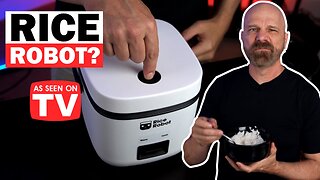How to Make Perfect Pancakes
Impress your brunch guests—or just treat yourself—to light, fluffy, delicious pancakes.
Step 1: Whisk the dry ingredients
In one bowl, mix the dry ingredients thoroughly together with a whisk so they're fully incorporated into each other. Break up any lumps.
Tip
Diner pancakes are often made with malted milk powder instead of sugar. Using malt in your recipe will impart that pancake-house flavor.
Step 2: Separate the eggs
Separate the eggs into the other two bowls. Whip the whites with a hand mixer until they form stiff peaks and set aside.
Step 3: Mix the wet ingredients
Add the milk to the egg yolks and beat them together with the mixer until they're bubbly. Then, mix in the oil or butter.
Step 4: Add dry to wet
Add the dry ingredients to the egg yolk mixture, and whisk them together very gently until they're just incorporated. Don't mix too much; overworked batter results in tough, dense pancakes. Fold in the egg whites in two additions, and let the batter rest for 15 to 20 minutes.
Step 5: Heat your pan
Heat your pan or griddle to about 350 degrees, and lightly coat the surface with cooking spray or vegetable oil. Test the temperature by sprinkling a droplet of water onto the surface; if it's hot enough, the water will skitter and evaporate.
Tip
Don't use butter to grease your pan, unless it's clarified butter. Regular butter will burn.
Step 6: Make a trial pancake
Test your temperature by making a trial pancake. Use your 1/3-cup measure to gather a scoop of batter & pour it onto your pan or griddle. When the edges have browned & bubbles appear, flip the pancake, & cook the other side until it's golden brown. Don’t press down on the pancake; it won't help it cook faster, and it'll crush the light texture.
Tip
To make blueberry pancakes, scatter a handful of frozen blueberries into the batter as soon as you pour it onto the griddle.
Step 7: Cook your pancakes
When you're satisfied that you've got the right temperature, use your 1/3-cup measure to pour on as many helpings of batter as you can comfortably fit on the griddle. There should be a bit of space between them, so that they don't overlap or touch when you flip them.
Step 8: Keep them warm
Pancakes should be served as soon as they're cooked through. If you're whipping up a big batch, don't let your cooked cakes get cold while the new ones are just hitting the griddle. Instead, lay the pancakes on a cookie sheet. Make sure not to overlap or stack them, and place them in a just-warm oven until you're ready to serve.
Step 9: Serve and enjoy
Serve your pancakes with traditional sides like butter and maple syrup, but don't be afraid to experiment! Give whipped cream, jams or jellies, peanut butter, sliced fruit, and even melted chocolate a try!
Did You Know?
The origins of the pancake date back to prehistoric times, when early cultures cooked their grain-and-water mixtures on hot rocks to make flatbreads.
-
 1:18:43
1:18:43
Kim Iversen
19 hours agoAmbassador Chas Freeman "Israel Has Never Put Forward A Peace Proposal"
30.6K73 -
 48:34
48:34
Breaking Points
2 days agoMAGA Lawyer DEBATES Liberal Analyst On Trump Legal Cases
10.5K13 -
 19:09
19:09
Scammer Payback
3 days agoConfronting Scammer Payback Imposters
55.7K23 -
 9:07
9:07
shaneyyricch
21 hours agoAddressing my beef with Harry Sisson
45.3K96 -
 1:52:46
1:52:46
Game On!
16 hours agoBoston Celtics Can't Win Game 2! | Sports Morning Espresso Shot
33.9K31 -
 1:00:01
1:00:01
Trumpet Daily
1 day agoMarxist Left Continues to Imprison Trump’s Inner Circle - Trumpet Daily | June 7, 2024
20.5K47 -
 LIVE
LIVE
The Amber May Show
9 hours agoReAwaken America Tour Detroit, MI - DAY 2 | Join General Flynn, Eric Trump, Kash Patel, Mayor Giuliani & Team America + Request Tickets for October 18-19 Selma, NC At: TimeToFreeAmerica.com
1,535 watching -
 12:23
12:23
Freakin' Reviews
1 day agoRice Robot Review: One-Touch Rice Cooker? | As Seen on TV
52.3K27 -
 5:45
5:45
Game Developer
1 day agoHow To Become A Game Dev (While Working A Full Time Job)
54.6K15 -
 4:16
4:16
ryanhoguepassiveincome
1 day agoElevate Amazon Ads brand content with your Brand Store
58.1K5